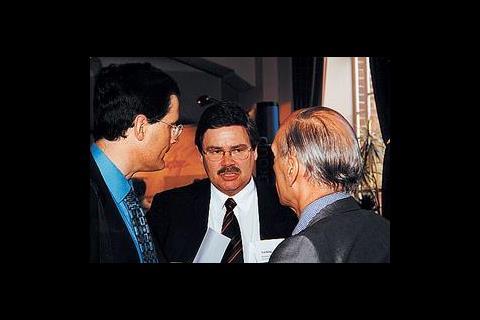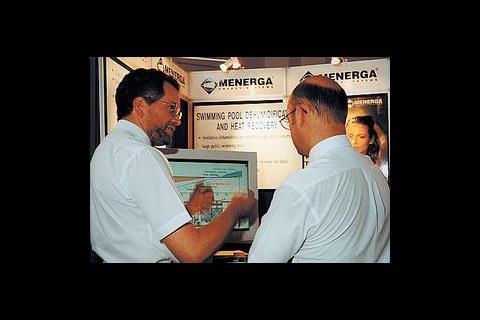Two of the papers dealt with whole life performance of buildings. Andrew Saville and Gary Moss examined the construction industry's growing need for robust data on the whole life performance of building services plant. Moss and Saville commented that: "Design for durability should be a watchword; a catchphrase on the lips of all building services engineers, and at the forefront of their minds."
"Gone are the days, of the late 1960s, when a speculatively built office block, in the centre of town, was fitted out with building services – ventilation, lighting, communications systems et al, ready for occupation, only to be stripped out again as soon as the potential occupiers' requirements were known," they commented.
The drive to whole life costs
Saville and Moss state that the late 1990s saw a major shift in emphasis in the construction industry, with clients increasingly demanding a whole-life approach to procurement. "Today clients require best value over the whole life cycle, not just at the procurement stage". Also, public sector projects are being procured through PFI and Prime Contracting, with long-term financial responsibility passed on to the contractors. And leading private sector clients are adopting similar approaches in their drive for ever greater efficiency and reduced overheads. These factors are driving the need for increasingly detailed cost information.
Clive Cain CBE also spoke about the importance of whole-life costing for the industry. He pointed to several factors which mean that all areas of construction should focus on whole-life costs. Cain quoted the National Audit Office (NAO): "Costs should be considered over the whole of their working life, not just the lowest initial procurement price". He pointed out that the industry must establish a close understanding with end-user clients and must always: "deliver what the clients wants; make sure it listens to the end-users; understand and use best practice standards".
Government legislation is always a hot topic, and this year Ted King of the DETR gave an overview of amendments to the Part L Building Regulations. The changes to Part L are a result of the Kyoto summit on global warming. At this, the UK committed to reducing levels of six greenhouse gases to 12·5% below 1990 levels by 2006 (or 2012 in some cases).
King pointed out that while the new Regulations take account of the environmental costs of construction, the government also needs to ensure that it is: "Keeping the Regulations proportionate; allowing sufficient design flexibility; and not encouraging the construction industry to take unacceptable technical risks".
Life after hfcs
In view of many drivers towards increased sustainability in buildings, David Butler, of the Building Research Establishment, spoke on the topic of 'Life after cfcs and hfcs'. Butler looked at the options for replacing cfcs and hcfcs, as well as long-term alternatives to hfcs. This is an issue which affects everyone in building services, as it's now UK government policy that wherever possible more environmentally acceptable alternatives will be used as refrigerants.
Most building services engineers have probably heard ammonia and hydrocarbons offered as alternatives. Butler also examined the pros and cons of other potential refrigerants such as carbon dioxide, air, water, ground water and thermoelectric devices. He also discussed several different methods for cooling buildings. These included Malone refrigeration, which uses a liquid near its critical point, rather than a gas or two-phase working fluid in most other systems. Malone refrigeration is in the very early stages of development, so not much is known about its practicality or long-term costs.
Butler compared the characteristics of different refrigerants and cooling methods on a useful table. A copy of this can be found on the CIBSE website (see end of article).
Cool underground
Dr G Maidment and Dr J Missenden of South Bank University put forward their thoughts on sustainable cooling schemes for the London Underground network. An appealing thought on a hot day in central London. Their novel approach examined the potential for putting London's rising water table to good use.
The presenters commented: "In London, and Merseyside, which are served by deep underground railway networks, rising water tables are proving an increasing problem, leading to a serious deterioration of track, traction supply and signalling systems. Also in these transport systems there is an increasing demand for an energy efficient and environmentally sustainable comfort cooling system."
Maidment and Missenden pointed out that it has been show theoretically that by cooling the air within the tunnels by 9°C, the temperature in the typical carriage operating under peak load conditions will reduce by approximately 6°C to a much more acceptable level.
Their paper showed that free cooling is also theoretically possible, by cooling the tunnel networks to 18°C. There are a number of ways of achieving this through use of a distribution pipe/heat exchanger as used in the Channel Tunnel; or by extended surface heat exchangers.
CIBSE members can find full details of all the papers at www.cibse.org, in the 'Events' area. Part 2 of the National Conference will take place on 18 October at the same Regents Park venue. See the CIBSE website for more details.
Source
Building Sustainable Design






















